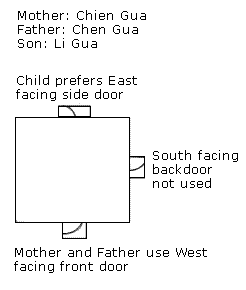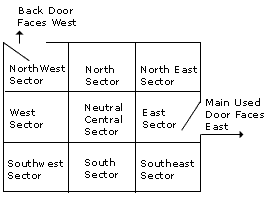The Pa Chai (Ba Dzai in Mandarin) or Eight Mansions system of traditional feng shui is one of the most respected and utilised in Asia today. However, it is not so well known in the West and there are few consultants who know how to use it properly.
Many of those who do use it use only one method of application. It is sometimes dismissed for being too simplistic in its approach, especially by those who advocate the San Yuen (Three Periods) or Flying Stars School. Nevertheless, it must be remembered that Pa Chai as a system for examining the feng shui of any building, is simply one aspect of three that make up the San He or Three Combinations School. It cannot therefore be taken in isolation from the other two factors.
System Basics
The basis of the system has to do with what are usually referred to as Locational/Directional Influences. These are specific effects which are said to be related to particular directions and their associated Locations within a building and bring either distinct benefits or problems when activated. The most frequent method for activating these Locations and Directions is by the placement of doors and the directions those doors then face.
What is meant by Location? Simply this. It is that area or sector of a building which when looked at from a bird’s eye view can be said to relate to a particular compass direction.

Direction is simply the compass direction faced when standing at a door and looking outwards from the room or building. Obviously it is necessary to obtain Direction before one can establish Location. Having ascertained what the facing direction of a building is, it is then a simple matter of dividing the floor space into its appropriate sectors, one for each of the eight major directions: North, North east, East, South east, South, South west, West and North west. Both these Locations and their accompanying Directions are associated with the benefits and problems of each sector, according to an individual’s personal or Life Gua.
Life Gua
This Life Gua is calculated according to a person’s year of birth and is related to the Time/Space Dimension; further explained in ‘The Strange Phenomenon of the Flying Stars’. The Life Gua is one of the eight Ba Gua trigrams and is in its turn related specifically to the changes of the I-Ching. There are several theories as to what these ‘changes’ are based on. The three most commonly accepted are:
- The interrelationship between the Five Elements as represented by each of the eight trigrams.
- The interrelationship between the family members as they are represented by each of the eight trigrams. ie. Father, Mother, Eldest Son, Eldest Daughter, Middle Son, Middle Daughter, Youngest Son, Youngest Daughter.
- The mathematical rationale that causes the interrelationships between each of the eight trigrams.
- The Fu Wei. This is said to bring stability, security and protection from bad luck but no special wealth or propserity.
- This mansion is usually ranked as the least powerful of the four positive mansions.
- The Yien Yen. This mansion brings positive benefits to relationships and family matters.
- The Tien Yi or Heavenly Doctor is related to health.
- The Sheng Chi. Accepted as the most auspicious of the mansions and brings with it great prosperity and good financial timing.
- Ho Hai is the first of these and as such is the least harmful. It brings minor accidents and occasional irritations.
- Wu Gwei or Five Ghosts is connected with fire, burglary and the types of loss of income such as come from redundancy.
- Liu Sha or Six Killings attracts legal battles, lost business opportunities and can bring terrible harm to those affected.
- Chueh Ming. This can be translated as ‘Total Loss of all Descendants’ and is deemed to be the most pernicious of all mansions, bringing death in its wake when it does strike.
East and West Groups
These eight trigrams and their related ‘elements’ of Fire, Water, Wood, Earth and Metal are divided into two groups, usually known as the East Group and the West Group. The divisioning of these five elements and the eight directions is also based on the above three theories. Thus there are Eight Locations (Mansions) in every building, each one associated with the same direction.
Each of these Mansions is in turn ascribed specific attributes, which when activated bring an individual living or working within the building either benefits or detriment’s. Whether a particular Location and Direction are potentially beneficial or harmful to a person is calculated according to their own individual placement within the order of the five elements and the eight directions.
The Eight Mansions and their generally accepted associated effects
The Four Beneficial Mansions
The Four Malevolent Mansions
A house floor plan showing the eight Locational Sectors gridded for a Pa Chai assessment.

It should be noted at this point that while the placement of doors and the directions those doors face make up some of the most important aspects of the Pa Chai system, there are other factors involved which have not been discussed in these particular case studies and which are nonetheless important for an overall assessment to be made.
